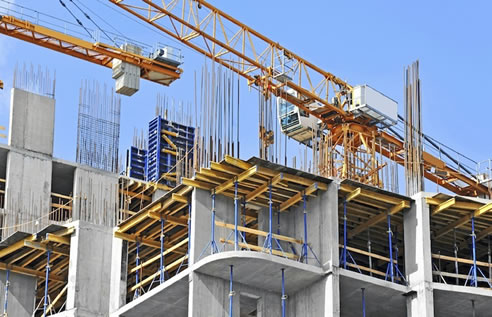Non Compliance vs. Non Conformity of Building Products

The highly anticipated DesignBUILD Expo 2018 will shed light on the latest trends, breakthroughs, and other important matters of discussion regarding the building and design industries, such as the advocacy for preventing the non compliance and non conformity of building products.
The Cause for Concern
After the fatal fire that blazed Grenfell Tower in London last year, the global construction industry has paid closer attention to the importance of following building requirements and regulations. It has been found out through a post-incident report that the tragedy was caused by non compliant building cladding panels, namely aluminium composite material (ACM) that did not meet combustibility requirements.
The Australian building sector has gone to further extents, especially since ACM is the same cladding material that sparked the 2014 Lacrosse fire in a high-rise apartment building in Melbourne. The state of Victoria is at the forefront with the Victorian Cladding Taskforce, formed just last year to investigate the presence of fire-prone cladding systems across the state. So far, the organisation has stated via an interim report that 1,400 buildings in Victoria are likely clad in ACM or expanded polystyrene (EPS).
The Parliament of Australia Senate has issued an enquiry into building products following this, among other reports covering the non compliance and the non conformity of building products. There is a fine line that separates non compliance and non conformity, and it is essential to draw this line in order to aggregate common problems and recognise the corresponding common solutions.

On Non Conformity
Non conforming building products (NBCPs) are essentially products that claim to be something they are in fact not. They do not meet the regulatory product requirements, project specific requirements and voluntary standards as stated in some form of declaration, whether by a first party (supplier), the second party (purchaser or builder), or a third party (entities under the supervision of an independent conformity assessment body).
On Non Compliance
Non compliant building products (NCPs) are products that are used in situations where they do not meet contractual or regulatory obligations, such as the National Construction Code (NCC). In other words, NCPs may comply with the relevant standards of testing and production but are applied in a location deemed not suitable by the NCC.
In the context of the Grenfell tower fire, ACM is labelled as a combustible building material. However, the cladding panels were used for the construction of the tower, which requires non combustible cladding as per the NCC. On these grounds, ACM is considered an NCP that is not fit for purpose and therefore led to the destruction of the building by fire.
Preventing Non Compliance and Non Conformity of Building Products
NBCPs should be easily resolved by accredited product certification bodies that can identify unsubstantiated first and second party declarations of conformity. NCPs call for more meticulous action as the current level of reliance on first and second party declarations are not always robust. To help ensure that building materials meet the relevant cores, local laws and technical standards, here are some measures to be taken into practice by industry specifiers:
- Only transact with reputable suppliers, and consult with accredited regulatory bodies.
- Look for building materials, products and systems with widely recognised industry accreditation or certification. CodeMark and WaterMark certifications are critically important where appropriate.
- Refrain from using specific products if the relevant conformity and compliance requirements are not demonstrated.
DesignBUILD aims to establish an effective platform for promoting awareness of building compliance and conformity. Billed as the industry event of the year, DesignBUILD Expo brings together leading building professionals, and architecture and design students into one community under one roof.
Watch out for more updates on DesignBUILD Expo 2018, happening on May 2-4 at the Melbourne Convention & Exhibition Centre. Visit www.designbuildexpo.com.au for more details.

|





 DesignBUILD 2020 Postponed Until October
DesignBUILD 2020 Postponed Until October Planning your Kitchen Renovation:
Planning your Kitchen Renovation: DesignBUILD 2020: A Focus on the Latest
DesignBUILD 2020: A Focus on the Latest Prefabricated Construction at
Prefabricated Construction at Architectural Excellence with Interior
Architectural Excellence with Interior 3D FDM Printing: What are the Important
3D FDM Printing: What are the Important Insulated Buildings and Cooler Streets
Insulated Buildings and Cooler Streets How Construction Software is Changing
How Construction Software is Changing DesignBUILD 2019: Commercial Platform
DesignBUILD 2019: Commercial Platform Evolution of Smart Cities at DesignBUILD
Evolution of Smart Cities at DesignBUILD DesignBUILD 2019: Speaker Series
DesignBUILD 2019: Speaker Series What's on at DesignBUILD 2019?
What's on at DesignBUILD 2019? The Rise of Engineered Timber Buildings
The Rise of Engineered Timber Buildings Stay Relevant: How to Handle Rapid
Stay Relevant: How to Handle Rapid Trending Lower: Australian Building
Trending Lower: Australian Building Sustainable Architecture: How to Build a
Sustainable Architecture: How to Build a Innovative Building Ideas from the
Innovative Building Ideas from the Global Building and Construction
Global Building and Construction Key Drivers of Prefab and Smart Modular
Key Drivers of Prefab and Smart Modular 3D Printing Sustainable Construction
3D Printing Sustainable Construction
